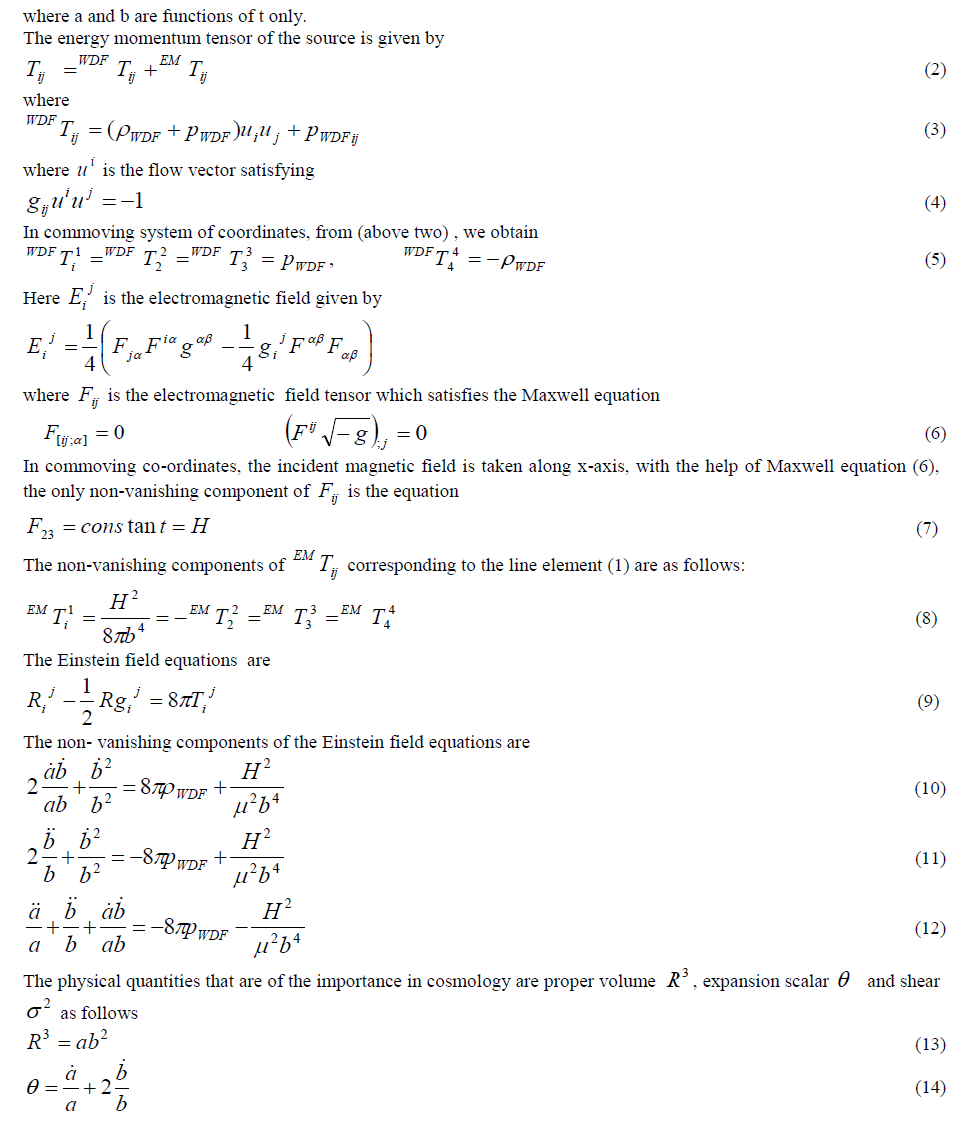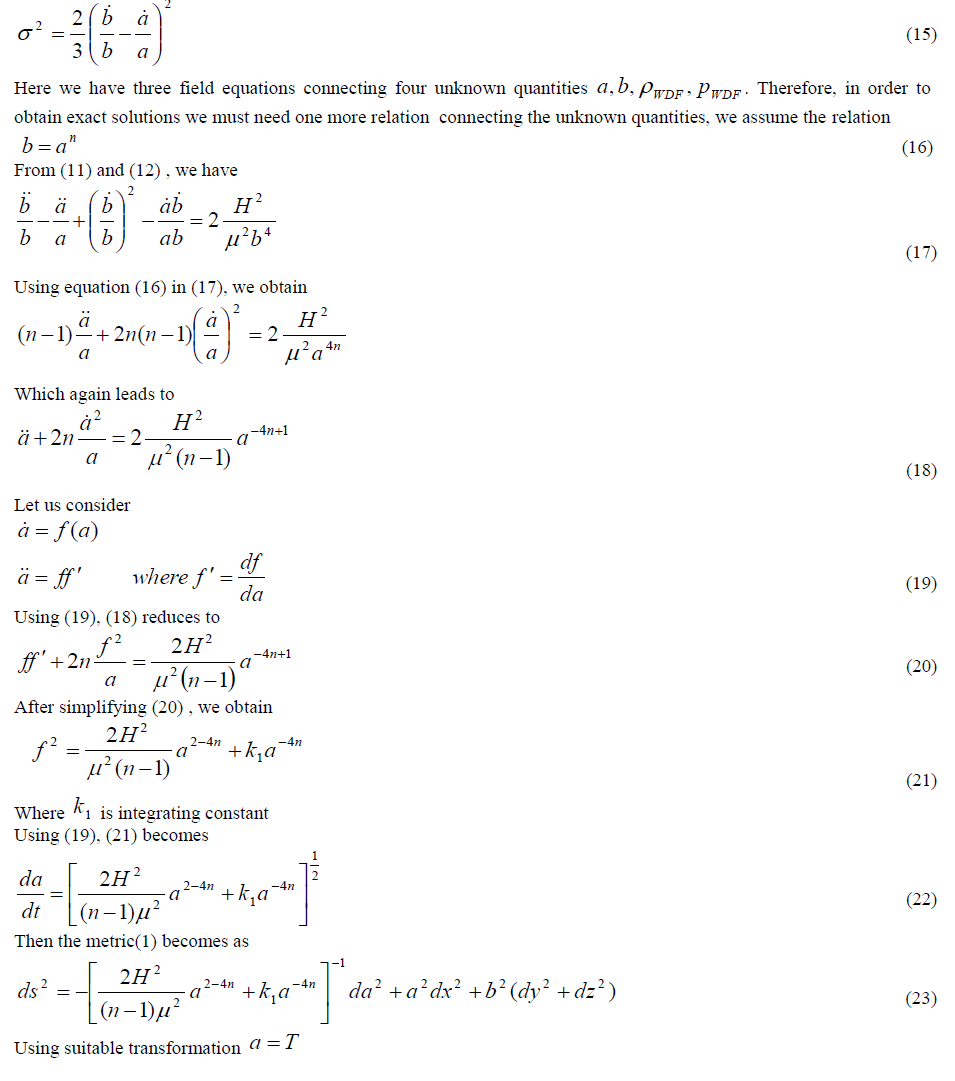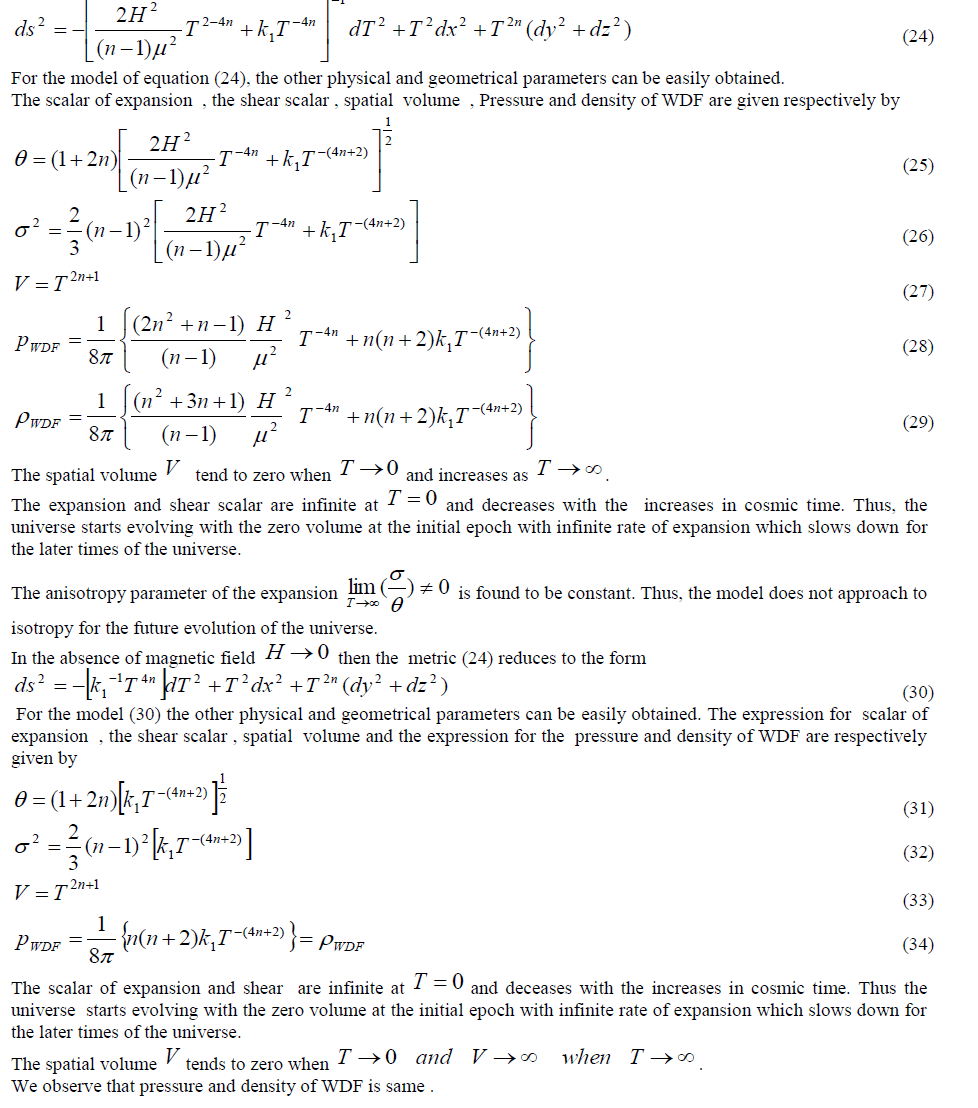ISSN ONLINE(2319-8753)PRINT(2347-6710)
ISSN ONLINE(2319-8753)PRINT(2347-6710)
S. P. Kandalkar1, A. P. Wasnik2, M. N.Gaikwad3
|
| Related article at Pubmed, Scholar Google |
Visit for more related articles at International Journal of Innovative Research in Science, Engineering and Technology
Some locally rotationally symmetric (LRS) Bianchi type I cosmological model of universe filled with dark energy from a wet dark fluid in the presence and absence of magnetic field is in investigated in general theory of relativity . We assume F23 is non vanishing component of Fij. We obtain exact solutions to the field equation, where a relation between metric potential ð‘ = ð‘Žð‘› is considered. The geometrical and kinematical properties of the models and the behaviours of the anisotropy of the dark energy have been carried out.
Keywords |
| Bianchi type- I space- time, Magnetic field Wet dark fluid, Dark energy. |
INTRODUCTION |
| The nature of the dark energy component of the universe [1-3] remains one of the deepest mysteries of cosmology. There is certainly no lack of candidates: cosmological constant, quintessence [4-6], k-essence [7-9], phantom energy [10-12]. Modifications of the Friedmann equation such as Cardassian expansion [13,14] as well as what might be derived from brane cosmology [15-17] have also been used to explain the acceleration of the universe. A particular case of the linear Equation of state has used in the cosmological context by Xanthopuolos [18], he considered space-times with two hypersurface orthogonal, space-like, commuting killing fields. The current standard model of cosmology implies the existence of dark energy which accounts for about 70% of the total energetic content of the universe, which ac-cording to the observations is spatially flat [19]. Several models have been proposed to explain dark energy [20-28]. An alternative consists of to consider a phenomenological decaying dark energy density with continuous creation of matter [28] or photons [29,30].The dark energy might decay slowly in the course of the cosmic evolution and thus provide the source term for matter and radiation. Different such models have been discussed and strong constraints come from accurate measurements of the CMB. Although some authors [31] have suggested cosmological model with anisotropic and viscous dark energy in order to explain an anomalous cosmological observation in the cosmic microwave background (CMB) at the largest angles. Bianchi type models have been studied by several authors in an attempt to understand better the observed small amount of anisotropy in the universe. The same models have also been used to examine the role of certain anisotropic sources during the formation of the large-scale structures we see in the universe today. Some Bianchi cosmologies, for example, are natural hosts of large-scale magnetic fields and therefore, their study can shed light on the implications of cosmic magnetism for galaxy formation. The simplest Bianchi family that contains the flat FRW universe as a special case are the type-I space-times. In this work, we use Wet Dark Fluid (WDF) as a model for dark energy. The solution of the field equations for (LRS) Bianchi type I space- time are found. Some physical and kinematical parameter are also evaluated for the solution. A brief summary is given in the last section . We consider string cosmology for Bianchi Type-I metric |
 |
 |
 |
 |
II.CONCLUSION |
| In summary, we presented LRS Bianchi type-I string cosmological models in the form of Wet Dark Fluid in the presence and absence of magnetic field. We adopt a relation between metric potentials The solution describes a shearing non-rotating model with a big bang start. In the absence of magnetic field, pressure and density of WDF is same. |
References |
|